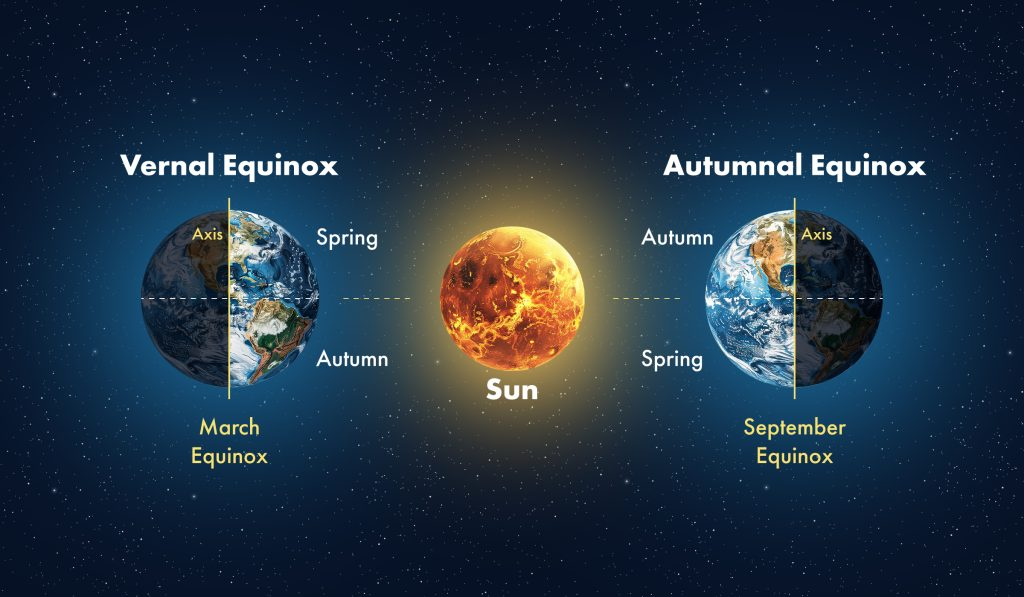Did you know we have two equinoxes?
The month of March holds the vernal equinox or in other words northward equinox. The word equinox comes from the Latin aequus (equal) and nox (night).
No matter where you are on Earth, the equinox brings us a number of seasonal effects. In the Northern Hemisphere, the equinox brings earlier sunrises and later sunsets. In the Southern Hemisphere, the equinox brings later sunrises and earlier sunsets. The fastest sunsets and sunrises of the year happen at the equinoxes. These equinoxes signify the start of spring in the North and the start of fall in the South. After the spring equinox, the days grow progressively longer than the nights towards the end of the season.
This year’s March equinox will happen on Thursday, March 20, 2025, at 3:01 AM Mountain time. The sun will cross the celestial equator at 2:09 AM Mountain Time.
The equinox on the Earth when the Subsolar point appears to leave the Southern Hemisphere and cross the celestial equator. It will head northward as seen from Earth. Earth’s tilt on its axis is what causes this northward shift of the sun’s path across the sky at this time of the year. The tilt on its axis and ceaseless motion in orbit is what causes the equinoxes and solstices. This event will then bring spring and summer to the Northern Hemisphere. At the same time, the vernal equinox marks the beginning of autumn and will shift winter in the Southern Hemisphere.








